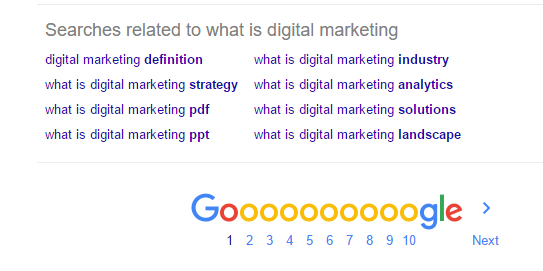The number one question we get from clients when we talk about content creation—specifically blogging—is, “What should I write about?” To which we respond, “Whatever your audience wants to know.”
The difficult part about blogging isn’t picking a topic; it’s picking a topic people care about—something that adds value to the reader. Content for the sake of content is pointless. There are a billion things about the tech and marketing world we could post on our blog, but we don’t, because half of it would only provide our audience with trivial information that they would never use.
When you blog, you want to give your audience something actionable. Teach them how to do something. Provide them solutions to a problem. That’s the key to effective blogging in this day and age.
Of course, that’s easier said than done. Pinpointing exactly what your audience wants to know takes a little time and research, but we’ve discovered a few tricks that can help you build a list of valuable topics.
Consider Your Support Calls/FAQs
This is easily the most direct way to figure out what you should be blogging about. What are the top 5-10 questions you get from your customers or clients? If you have a customer service or support line, what are most of the calls about? Do you hear the same questions throughout different sales meetings?
In all these situations, take the most actionable questions and develop blogs around them.
Actionable tip: If you’re unsure about what your most frequent questions are, try this method.
- At the beginning of each month, create a spreadsheet or document where you can input questions and inquiries as they come in.
- Whenever a customer or client inquires about something actionable, document the question.
- Do this for a month. Anytime you get a repeat question, make a tally.
- At the end of the month, review your spreadsheet and determine which questions were asked the most.
- Use the information to develop blog topics.
The Google Trick
We learned this trick at a conference a few years ago, and it’s worked for us ever since.
If you’ve ever searched for anything on Google, then you’ve noticed that as you type in your query, Google will try and guess what you’re searching for by offering a list of suggestions in a drop down box. It’s called google predictive text, and it’s a time saving mechanism that predicts what you’re searching for based on what other users have searched for using the same key words. Here’s a visual example (credit):

On top of the predictive text, Google provides suggested and related searches at the bottom of the SERP. Example:

Both the predictive and related suggestions give you an very good idea of what people are looking for in relation to a particular topic, and each of those can be turned into a blog.
Actionable Tip: Make a list of ten keywords and ten different search queries that have to do with your business (use some of your FAQs for queries as well). Type them into google and write down all the predictive suggestions and related suggestions. That should give you tons of ideas for content.
Crowdsource
What better way to find out what your audience wants to know than by asking them?
It’s so simple that it almost seems unorthodox, but thanks to social media, you can communicate directly with clients, customers, and followers to get ideas for new products, services, and content.
There are a lot of ways to creatively crowdsource, from posting questions directly on Facebook or holding a Twitter Q&A, to sending surveys through email. Consider the ways your business best interacts with its audience, and then use that as a means of finding out what they want to know.
Actionable Tip: Create a survey on your website that gives users the opportunity to provide feedback on the type of content, information, and knowledge they’d like to see (consider offering an incentive for doing so, such as extra free content or a $10 gift card). Then attract people to your survey page using Facebook Advertising.
Did you find this blog helpful? Is there something that YOU want to know from WideNet? If so, share it with us in the comments. Also, if you want a more in depth look at how content can boost your SEO, check out this recent WideNet U presentation.


